When it comes to cities in China that can rival Xi’an in terms of historical and cultural heritage, Luoyang, the “Divine Capital” with a thousand-year history, undoubtedly stands out. After all, without a solid ancestral foundation, who would dare to claim the title of “Divine Capital”?
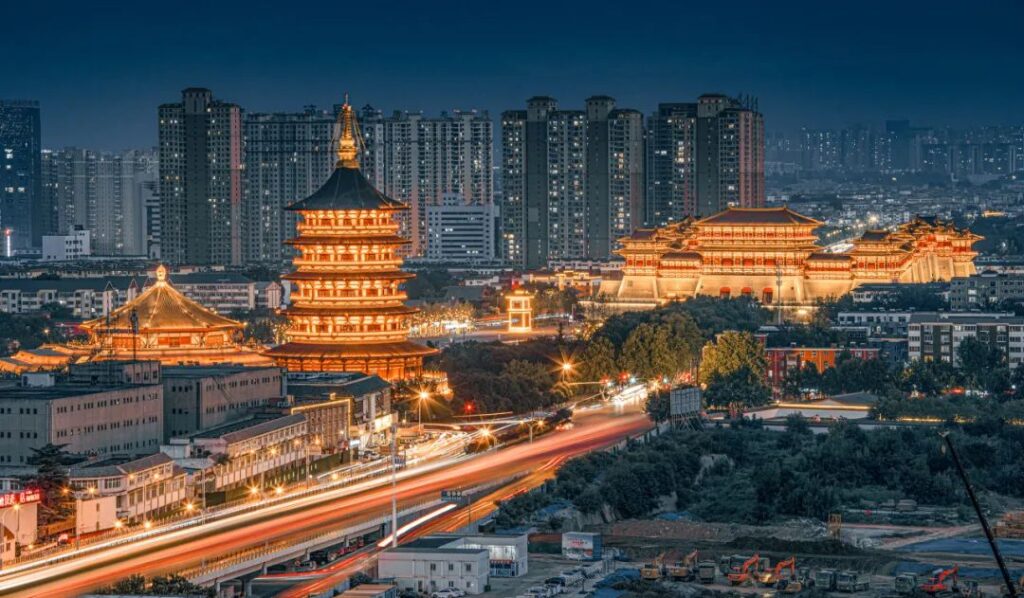
The beauty of Luoyang not only shines during the day but also truly highlights its divine status under the brilliant lights at night. The local government has officially endorsed “Night Tour,” “Night Entertainment,” “Night Food,” “Night Shopping,” “Night Performance,” and “Night Photography” as new tourism labels to be vigorously developed. For hardworking individuals seeking revenge bedtime and experiencing nightlife, Luoyang is the perfect destination.
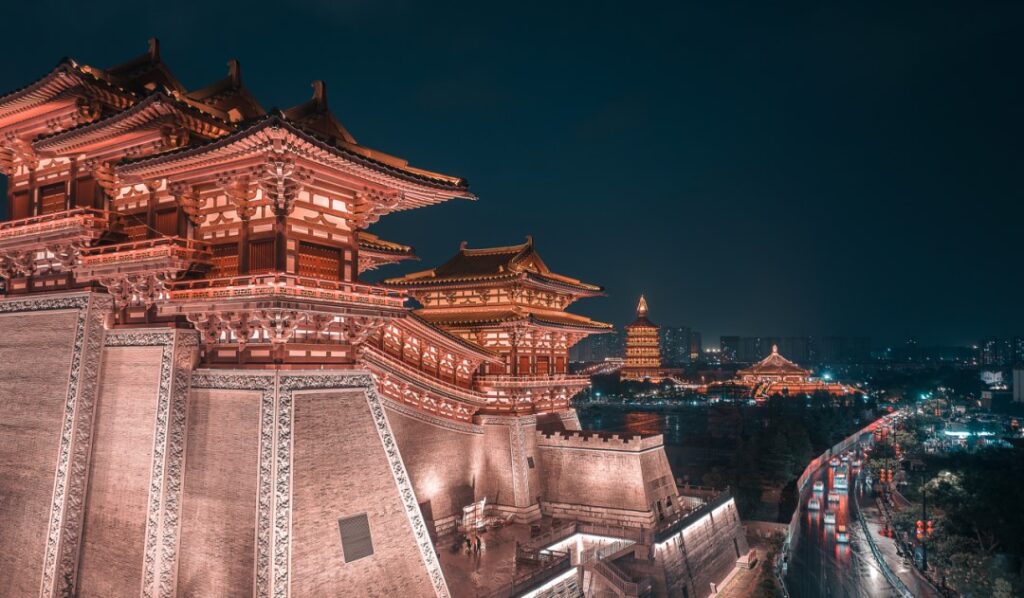
When it comes to night tours in Luoyang, visiting the Longmen Grottoes is a must, without which the trip would be incomplete.
The Longmen Grottoes, one of the most famous grottoes in China, have long been renowned. Situated on both banks of the Yi River in Henan Province, atop Longmen Mountain and Xiangshan Mountain, they are located at the center of the Chinese cave temple network along the “Silk Road.”
The grottoes have witnessed the secularization and sinicization of Buddhist statues, as well as the integration of national cultures and the exchange of Chinese and foreign civilizations. They are one of the most famous and stunning historical relics in Luoyang and even Henan Province.

More than 2,000 caves and niches are scattered on the cliffs on both the east and west banks. Legend has it that the Longmen Grottoes were excavated by Da Yu during his flood control efforts, and the tale of the carp leaping over the dragon’s gate also originated here. Starting from the reign of Emperor Xiaowen of the Northern Wei Dynasty, people meticulously carved this magnificent and exquisite scroll.
Over the course of more than 1,400 years and more than a dozen dynasties, 2,345 caves and niches remain, housing more than 110,000 statues. The grottoes are also known as the “pinnacle of Chinese stone carving art.” During construction, a large number of colored paintings were used. Although these paintings have long faded and the stone carvings have mostly been damaged, this 1-kilometer-long architectural masterpiece still stands quietly, telling the world about the vicissitudes of history.
As a World Heritage Site that everyone must visit, touring the Longmen Grottoes at night, with the addition of lighting, allows one to experience the shock and mystery of the grottoes even more. As night falls and the lights twinkle, the thousands of niches on the stone walls shine brightly along the Yi River. Under the adornment of more than a thousand lights, the Buddha niches and statues of various sizes seem to transport visitors back to the prosperous Tang Dynasty.

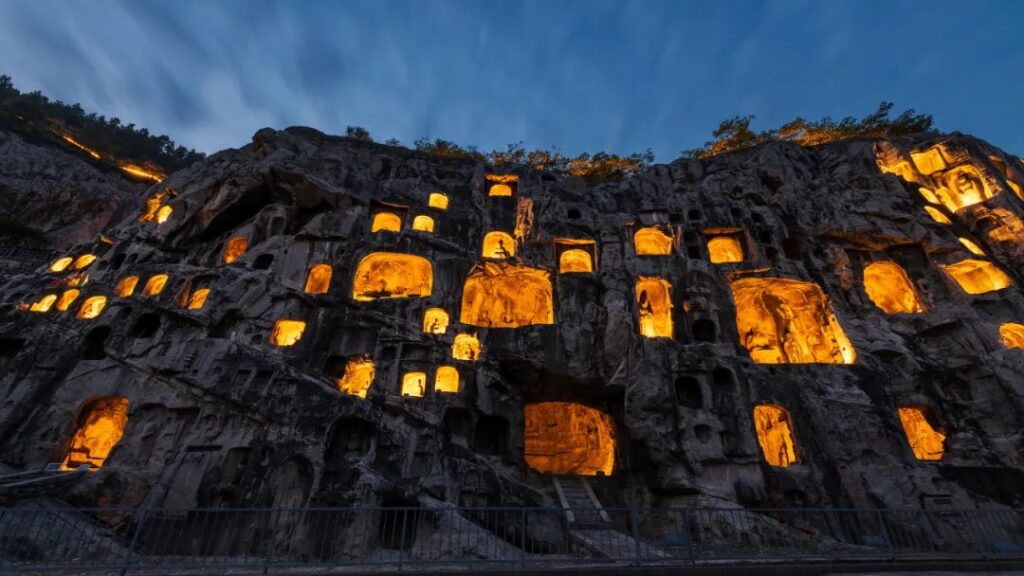
To tour the entire Longmen Grottoes scenic area in one day, a well-planned itinerary is essential. After all, the main attractions of the Longmen Grottoes scenic area consist of four parts: the Western Hill Grottoes, the Eastern Hill Grottoes, Xiangshan Temple, and Bai Garden. The entire journey takes 4-5 hours. Entering the park around 3 pm allows you to avoid walking under the scorching sun. Following the route below, you will arrive just in time to see the grottoes illuminated, making the night tour of the grottoes sufficiently chill.
Start with Bai Garden. Bai Garden is the tomb garden of Bai Juyi. It is said that Bai Juyi lived in Luoyang for 18 years in his later years, building Xiangshan Temple in Longmen, opening Bajie Beach, and having a deep affection for the landscape of Longmen. Following his wishes, he was buried here after his death. Visiting this place requires climbing a small hill, so it should be done first, as it closes at 5:30 pm. Next, walking back will lead you to Xiangshan Temple. Xiangshan Temple was built in 687 AD during the Tang Dynasty to house the remains of the Indian monk Divakara and was expanded into a temple during the reign of Wu Zetian, who bestowed the name “Xiangshan Temple.”

Descending from Xiangshan Temple, you will reach the highlight of the night tour of the Longmen Grottoes—the Western Hill Grottoes. Here, as the lights come on, the thousands of Buddha statues will transport us back to the prosperous Tang Dynasty, allowing us to experience the treasure that China has left to the world.
The Western Hill Grottoes are the most essential part of the Longmen Grottoes. There are more than 50 large and medium-sized caves from the Northern Dynasties and Sui-Tang periods, housing a total of nine large Buddha statues. The cream of the crop is the Vairocana Buddha, said to have been built based on the image of Wu Zetian. This Buddha statue is known for its mysterious smile—even foreign tourists have referred to it as the “Oriental Mona Lisa.”
Countless people stop at the foot of the giant Buddha, and even the noise seems quiet. The flickering yellow lights in the grottoes adorn the mountains, bringing visitors a more magnificent and fantastical visual spectacle.
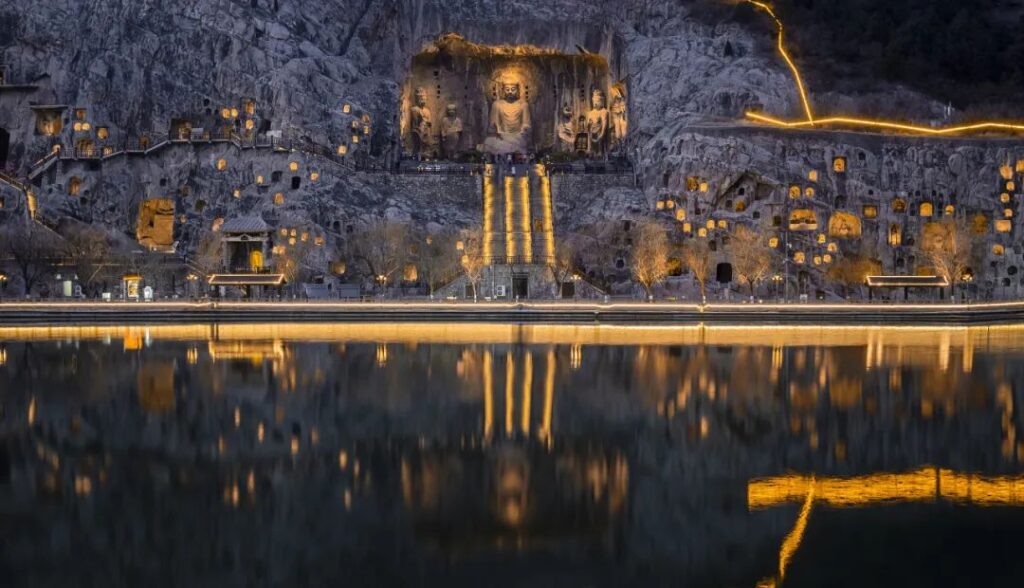
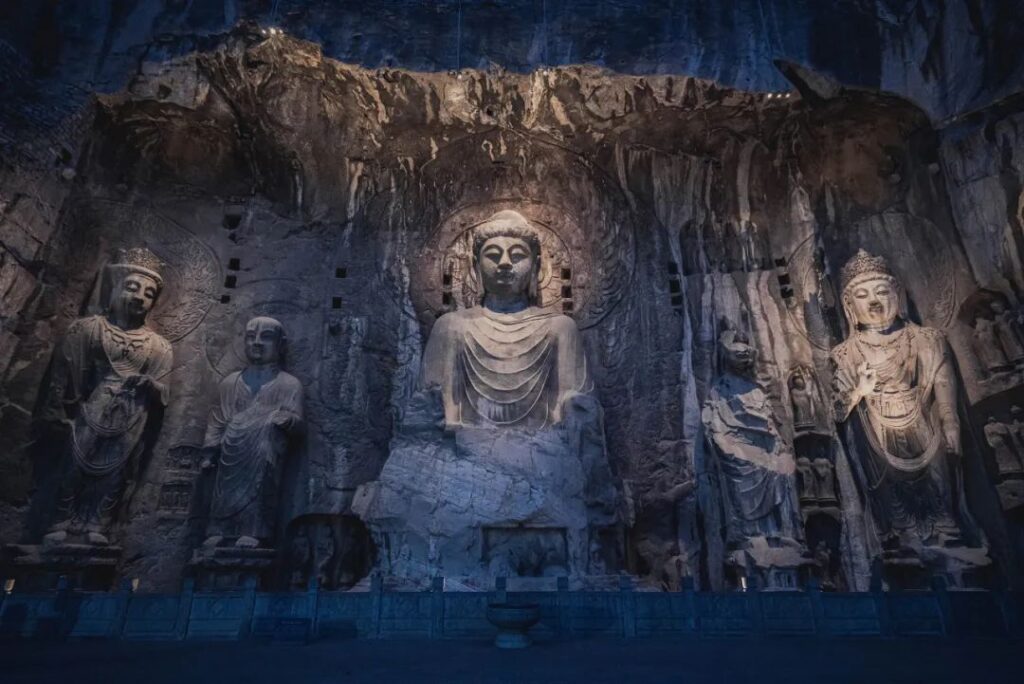
Of course, popularity also means that this place has the most people. During the Labor Day holiday, it resembles the grand scene of believers making a pilgrimage to Jerusalem.
If you don’t want to spend half a day here, you can skip the three attractions of Bai Garden, Eastern Hill Grottoes, and Xiangshan Temple, and head directly to the Northwest Service Area in the evening for the night tour of the Western Hill Grottoes.
Night Tour of Museums
In Luoyang, besides night tours of various attractions, experiencing a China-exclusive museum night is a niche experience that other cities cannot offer. Compared to waking up early and queuing at museums in the past, touring museums at night is like a large-scale, immersive, knowledge-based escape room for us night owls.
The most renowned among them is undoubtedly the Luoyang Museum.
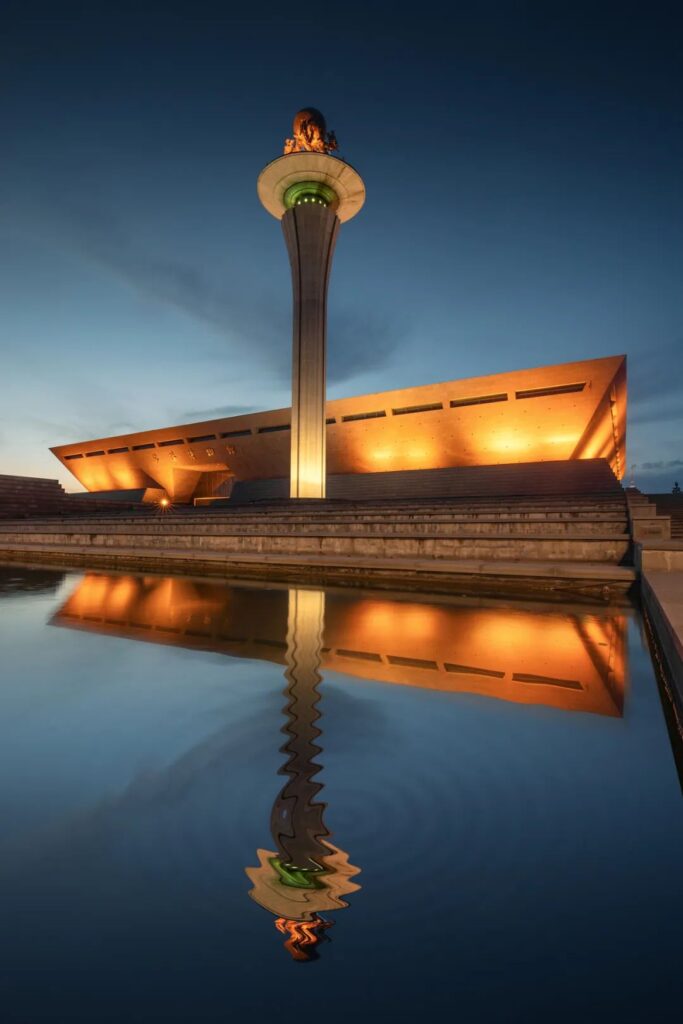
As one of the first national first-class museums, it was established in 1958. Here, you can see cultural relics from prehistoric times to the Northern Song Dynasty. The first floor houses three exhibition halls showcasing the “Heluo Civilization”; the second floor features the “Treasure Exhibition,” “Tang Tricolored Glazed Pottery Exhibition,” and “Court Artifacts Exhibition,” where most of the museum’s treasures can be found.
Touring the Luoyang Museum at night adds a hint of “stealing” excitement. The night tour of the Luoyang Museum combines “manual interpretation + NPC plot performance,” covering five venues: “Heluo Civilization Exhibition Halls 1, 2, and 3 + Stone Carving Gallery + Treasure Gallery.” Each exhibition hall is led by an interpreter, and the most interesting part is the interspersed NPC plot performance, which is indeed quite remarkable in the museum world.

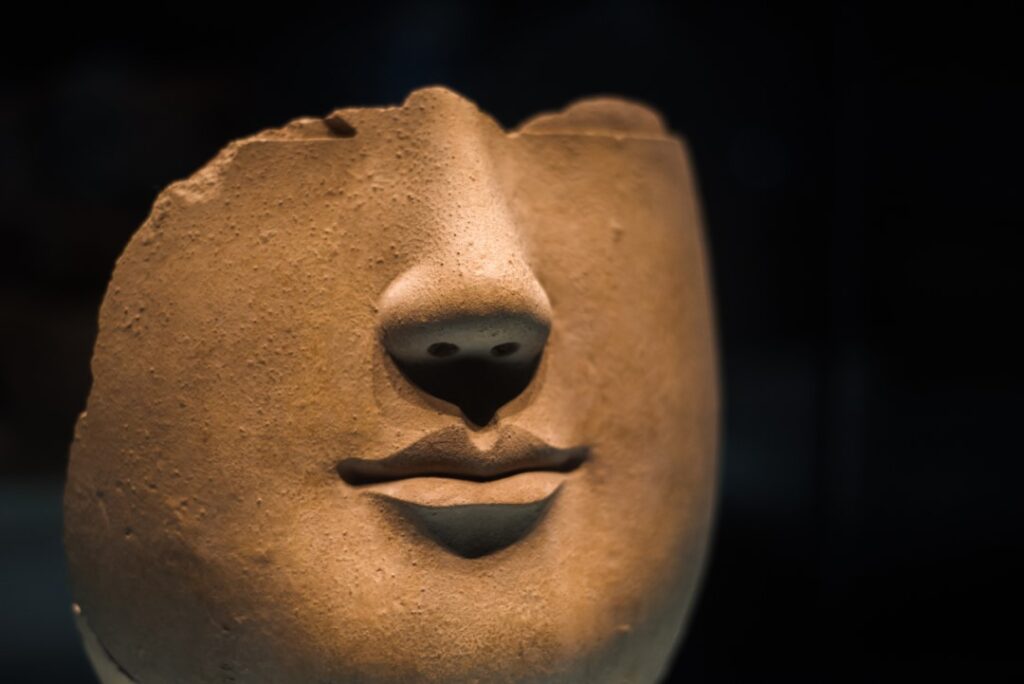
In addition to the night tour of the Luoyang Museum, doesn’t a night tour of the Luoyang Ancient Tombs Museum sound even more exciting?
The Luoyang Ancient Tombs Museum is the only museum in China that focuses on displaying ancient tombs. It exhibits 25 typical tombs relocated and restored from various parts of Luoyang, dating from the Western Han Dynasty to the Song and Jin periods.
The overall display of each ancient tomb, with the authentic reproduction of the tomb chamber architecture, unearthed cultural relics and their positions, tomb murals, and brick carving art, provides us with a more genuine perspective to understand the views on life and death, as well as funeral customs, of people from different eras, and to appreciate the rise and fall of individuals and dynasties over three thousand years of historical accumulation.

The most important aspect of the unique experience of touring museums at night is not avoiding the crowds during the day but the immersive interactive experience that allows people to better understand the stories buried in the long history of Luoyang, this ancient capital.
Tips: Museum night tours are not held daily. It is necessary to check the official opening announcement in advance and make reservations.
Related Articles:
3.Night Walk in Luoyang
City walks have become a cliché, but in Luoyang, a night walk might be the right way to explore the city.
The Jiuzhou Pool ruins in Luoyang seem to be exclusively designed for night tours. It was an important royal pool and garden within the Ziwei City of the Sui and Tang Luoyang palace. At night, the Jiuzhou Pool palace walls are illuminated, and walking in the sea of lights with your hands behind your back, you feel as if you are in the prosperous world of the Tang Dynasty. The immersive performances in the park and the visitors dressed in Han clothing, taking photos, together create a dreamy scene of the great Tang Dynasty.
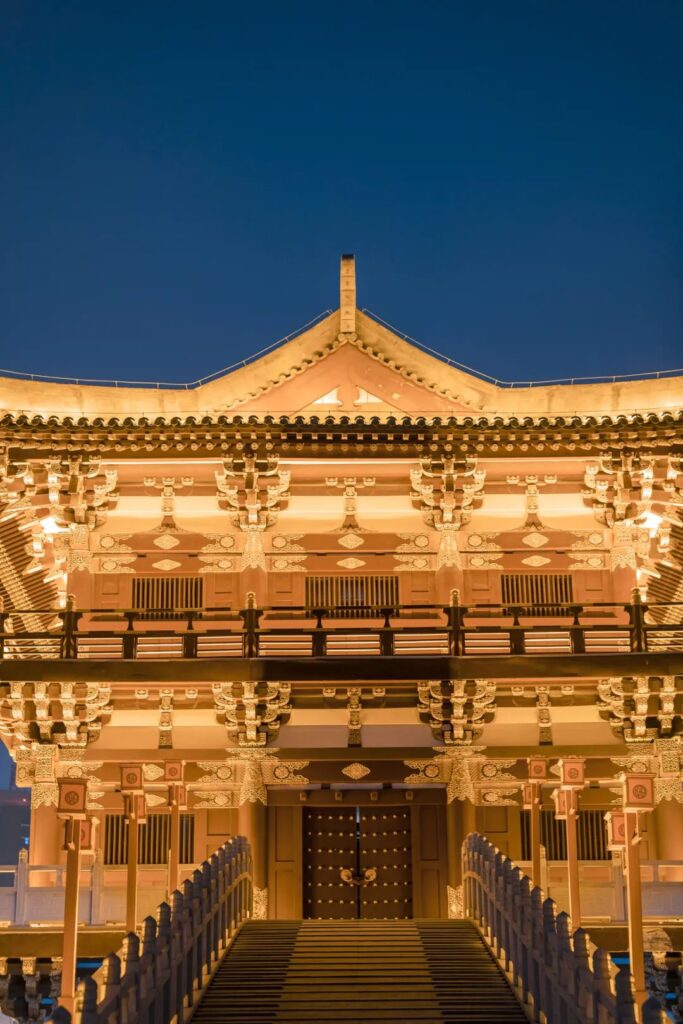
If you want to directly experience the prosperous image of the Tang Dynasty under the night sky while savoring the human touch of the ancient city amidst the bustling streets, and check off eating, drinking, playing, and shopping all at once, head straight to Yingtian Gate.
Yingtian Gate at night provides an excellent photo opportunity. Climbing the tower, you can take in the magnificent scenery of the Sui and Tang Dynasties. Of course, if you haven’t prepared in advance, it doesn’t matter, as the scale of Hanfu stores in Luoyang is rare in the country, and they can provide a one-stop service from makeup to costume styling.

In addition to Yingtian Gate, there is also Lijing Gate. Yingtian Gate is the main southern gate of the royal palace city and was an important place for the court to hold major national celebrations and diplomatic activities at that time. Ceremonies such as Tang Gaozong capturing the King of Baekje, Wu Zetian’s ascension to the throne, and Tang Xuanzong receiving the 8th Japanese envoy to the Tang Dynasty were all held at Yingtian Gate, naturally making it an extraordinary site. Lijing Gate, on the other hand, is the west gate of Luoyang City. Passing through the city gate, you will find West Street and Shizi Street Night Market, with numerous shops and a strong sense of everyday life.

When playing until around 9 pm, you naturally need the comfort of a late-night snack. This is also the first choice for eating at night markets in Luoyang. Walking east from West Street, you will reach the intersection of Shizi Street Night Market. Along Xinghua Road, walk all the way south to Nandajie and then to Nanmenkou Street. Along the way, there are various specialty snacks and local Luoyang delicacies – stir-fried cold noodles, plum soup, peony cakes, boiled beef tripe… The variety is so great that you hardly see the same shop twice, which can be a bit of a headache for those with decision-making difficulties.

Of course, I recommend you go straight for a bowl of hot soup to warm your body and soul. After all, this city has a love for soup that rivals Guangdong. Spicy and sour soup, mutton soup, beef soup, meatball soup, donkey meat soup, tofu soup…
There’s also the “Bu Fan Tang” (literally “no-flip soup”) that only appears at night. This dish, known as Luoyang people’s own hangover cure, disappeared for a while but has recently regained popularity. However, in the eyes of Luoyang locals, it is still a snack “not consumed by locals, but exclusively for out-of-town tourists.”
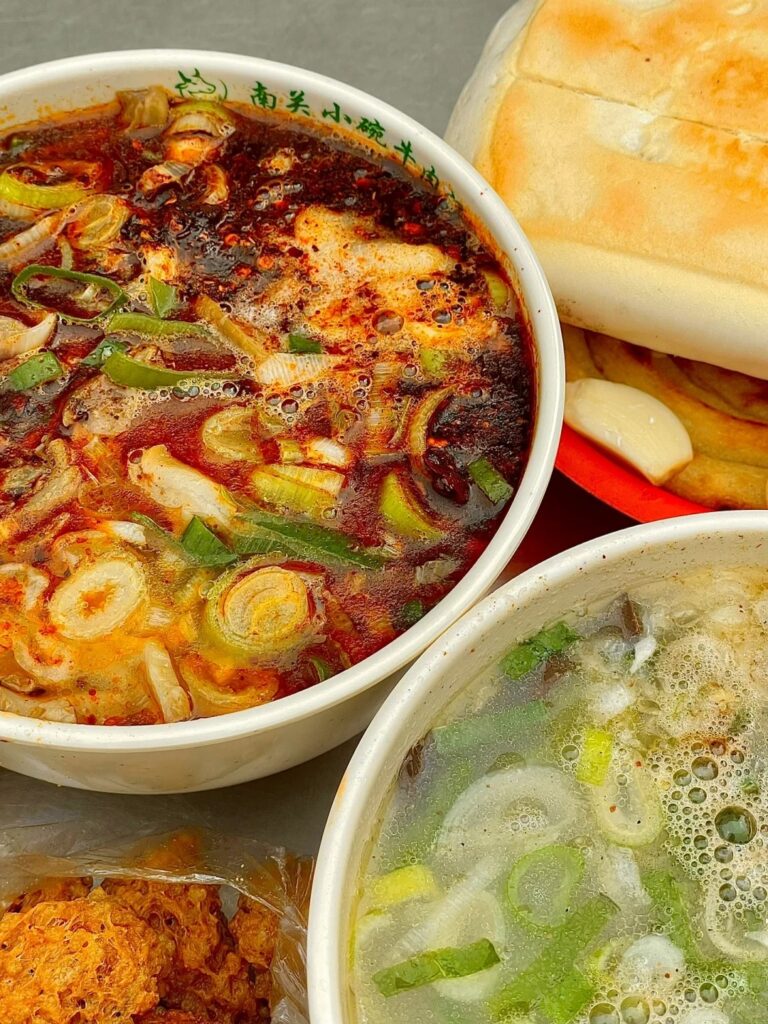
Unlike the large-scale commercialization of Shizi Street, if you want to experience authentic old Luoyang brands and the daily life of Luoyang people, you still need to take a trip to Minzhu Street, which is further east of Shizi Street Night Market. This street, which contains the memories of generations of Luoyang people, also holds many local Luoyang people’s taste memories. Yushu Garden Roast Chicken, Panshenyuan Sauced Meat, Gao Ji Guozi Oil Tea… These seemingly inconspicuous small shops are actually much older than most people.
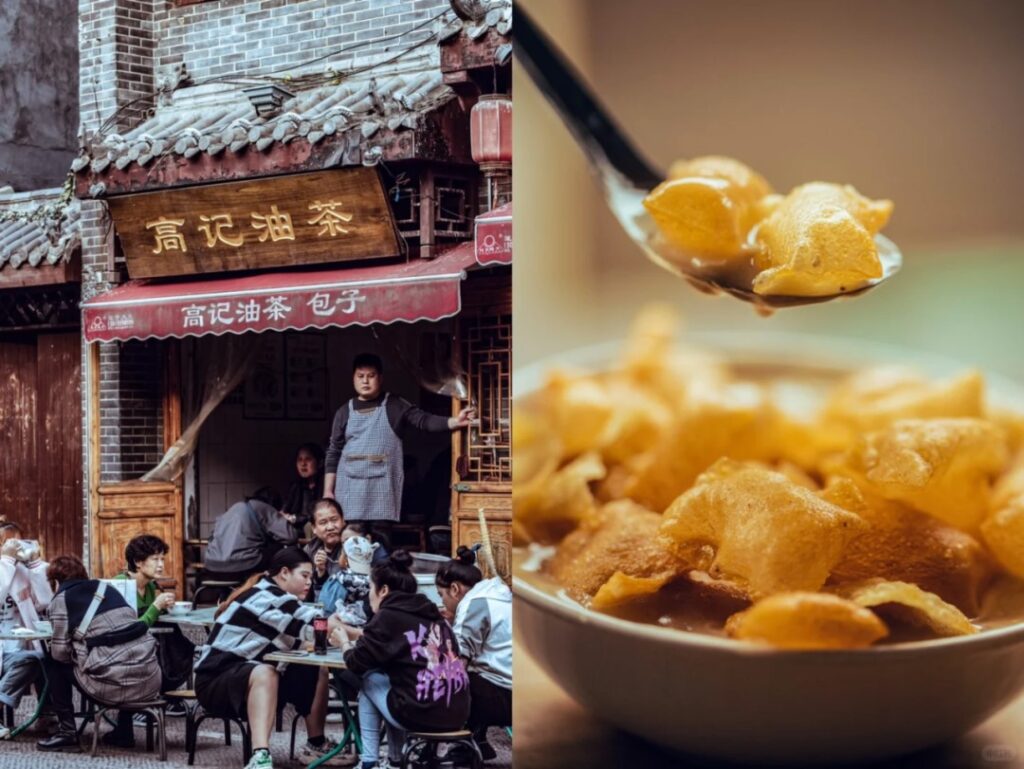

Off-peak weekend short trips are still a good remedy for working people to adjust their rhythm and find a sense of relaxation. In Luoyang, it is the best night tour destination to provide the ultimate experience for lazy tourists who don’t want to wake up early. As night falls and the lights come on, Luoyang seems even more dreamy and wonderful than during the day. Come on, take a weekend to visit Luoyang and embark on a night city walk that transcends ancient and modern times.





